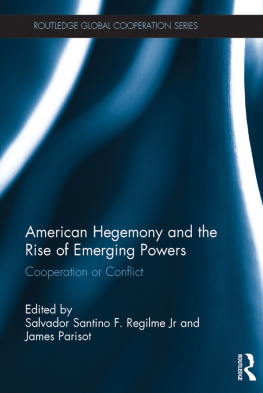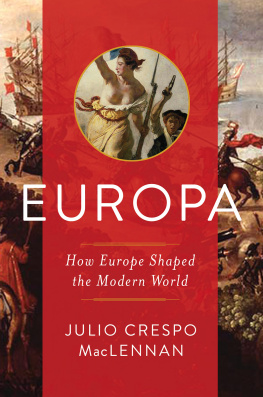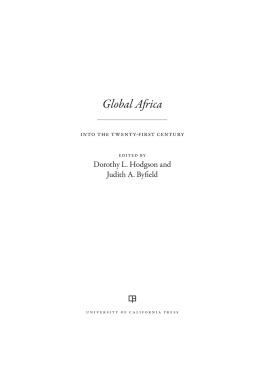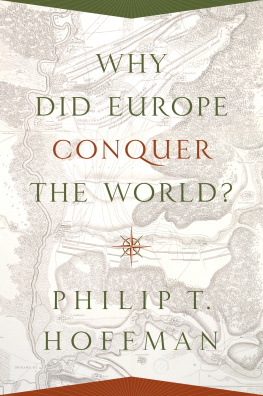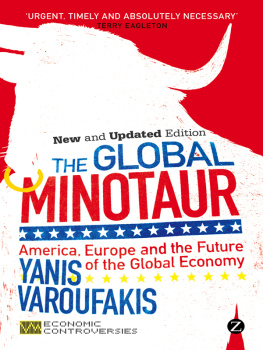1913
1913
In Search of the World
before the Great War
CHARLES EMMERSON

PUBLICAFFAIRS
New York
First published in Great Britain in 2013 by The Bodley Head
Published in the United States by PublicAffairs,
a Member of the Perseus Books Group
All rights reserved.
No part of this book may be reproduced in any manner whatsoever without written permission except in the case of brief quotations embodied in critical articles and reviews. For information, address PublicAffairs, 250 West 57th Street, 15th Floor, New York, NY 10107.
PublicAffairs books are available at special discounts for bulk purchases in the U.S. by corporations, institutions, and other organizations. For more information, please contact the Special Markets Department at the Perseus Books Group, 2300 Chestnut Street, Suite 200, Philadelphia, PA 19103, call (800) 810-4145, ext. 5000, or e-mail special..
Typeset by Palimpsest Book Production Limited, Falkirk, Stirlingshire
The Library of Congress has cataloged the printed edition as follows:
ISBN 978-1-61039-257-0 (EB)
First Edition
10 9 8 7 6 5 4 3 2 1
To my father
Contents
In 1913, Francis Wrigley Hirst, the editor of The Economist magazine, published an essay entitled Foreign Travel. In it, he described the globalisation of his day, a process which seemed to pick up speed with each passing decade.
Already, Hirst wrote, railways and steamers have made the journey from London to Chicago quicker and pleasanter by far than was the journey from London to Edinburgh two centuries ago:
English comforts and American luxuries, French dinners and German waiters, are everywhere at the service of wealth. Wherever there is plenty of sport, good air for invalids, or good markets for merchandise, good hotels will be found. The watchful eye of capital, which knows no national prejudices in its unceasing search for high interest and adequate security, is always looking for opportunities, and the taste for travel grows with the facilities. Switzerland was the first playground of Europe. The world is now covered with playgrounds, to which active idlers and weary money-makers flock in obedience to the varying fashions of smart society, of sport, or of medical prescription. The African desert, Kashmir, California, Japan, the Canary Islands, Bermuda, the isles of Greece, Uganda, British Columbia, are not too remote for the modern globe-trotter. The commercial traveller is ubiquitous; and our own correspondent pursues wars and rumours of wars as keenly as the hunter tracks his quarry.
Travel not just that of wealthy tourists in search of new experiences but that of migrants in search of brighter tomorrows had become much cheaper over the course of Hirsts lifetime (he was thirty-nine years old in 1913). No wonder, then, he wrote, if the number of those who travel for pleasure or profit steadily increases.
In the modern age, however, the traveller was provided with a degree of comfort unimaginable to his or her ancestors. On the SS Cleveland, electric elevators connected the decks, and telephones allowed one to make calls from cabin to cabin. The ship was equipped with a darkroom for amateur photographers, a library stocking books in English, French and German, and a gymnasium with electrically operated machines, including several in the form of a saddle. In 1913 the last leg of the journey from San Francisco back to New York was still by transcontinental railway. The opening of the Panama Canal in 1914 would allow future travellers to complete their trip by sea.
This book is a circumnavigation of a different sort. Starting in the capital cities of Europe London, Paris, Berlin, Rome, Vienna, St Petersburg it journeys to the cities of North America Washington, New York, Detroit, Los Angeles, Mexico City and then to the four corners of the wider world Winnipeg, Melbourne, Buenos Aires, Algiers, Bombay, Durban, Tehran and Jerusalem. Finally, it travels into the hearts of the chief cities of the great non-European empires of 1913 Constantinople, Peking, Shanghai and Tokyo.
The intention is not to capture everything that happened in a single twelve-month period in every corner of the globe, still less to deliberately seek out the causes of the Great War which broke out the following summer. The origins of the First World War are the subject of an enormous and ever-expanding body of historical scholarship. Debate over the attribution of responsibility for the war has raged since its outset. Various historians at various times have pointed the finger of blame towards the militarism of Prussian society, German ambitions for world domination, the internal political crisis of the
Seeking to understand why the world went to war in 1914, and how that war then lasted for four years, is a vitally important historical and political endeavour. Only through attempting to understand the past however imperfectly can we possibly hope to learn from it. And yet, as one leading historian has written, the single-minded quest for the causes of the war may, perversely, carry the risk of distorting the past as well as uncovering it:
causes trawled from the length and breadth of Europes pre-war decades are piled like weights on the scale until it tilts from probability to inevitability. Contingency, choice and agency are squeezed out of the field of vision.
Knowing what ultimately happened a war which would turn the world upside down can narrow our view of what the world was like before it happened. Because the war started in Europe, there is a natural tendency to focus on the magnificent cauldron of European
Of course, it is not possible to escape hindsight. We cannot but look at the world of 1913 through the prism of what happened after it indeed part of the interest of that year is our knowledge of what happened next. But we can at least attempt to look at the world in 1913 as it might have looked through contemporary eyes, in its full colour and complexity, with a sense of the futures openness. We can do this, in part, by looking at what individuals were writing about at the time and what newspapers were reporting. We can do this by reading the confidential reports put together by diplomats on the spot in Tokyo or Buenos Aires to inform their superiors as to the situation in a particular country at a particular time. We can do this too by looking at those parts of the world which tend to receive less attention from Western historians the non-Western world because they were less obviously and directly involved in the lead-up to what started as a European war.
The objectives set for this book are thus in one sense more modest and in another more ambitious than many books written about this time. Modest, because it does not seek to explain the Great War this book should be taken as a complement to histories of the wars origins, not as a replacement for them. Modest also because it takes a single year as its focus, rather than describing the entirety 1913 was a year of possibility not predestination.
Writing about the world in 1913 often involves digging further back. Sometimes it involves the arresting realisation that our perspectives on the passage of time are skewed by familiarity or by proximity we tend to mentally compress time when it falls within our own lives, and extend it when it falls in the lives of past generations. And yet for those alive in 1913, the 1880s and 1890s were no more distant than the 1980s and 1990s are to us: the fall of Communism in eastern Europe, Tiananmen Square, the advent of the personal computer, the presidency of Bill Clinton. The Boxer Rebellion of 1901 when foreign troops marched into the Forbidden City in Peking (Beijing) to put down a rising which targeted Western interests is as close in time to 1913 as the events of September 11, 2001 are to us today. In 1913, only a hundred years ago, tens of thousands of veterans who had fought in the American Civil War met in Gettysburg, Pennsylvania, on the site of one of that wars most important battles. The shadows of the nineteenth century loomed large into the early twentieth century.
Next page


